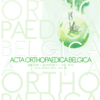Radiological and functional outcomes of modified Metaizeau technique in displaced radial neck fractures
Radius neck fracture ; children ; closed reduction ; displaced fracture ; intramedullary nailing
Published online: Sep 14 2021
Abstract
The management of displaced radial neck fractures in children is still a controversial topic. The objective of this study is to examine the outcomes of modified Metaizeau technique in the children with displaced radius neck fractures.
The retrospective study included 15 children with displaced radial neck fracture with an angulation of more than 30° who were managed with the use of leverage technique by mosquito clamps and internal fixation with elastic stable intramedullary nailing (ESIN). Radiological and functional assessments were performed during follow-up. Additionally, the patients were evaluated using Mayo Elbow Per- formance Score (MEPS).
All the children could be managed with clamp-assisted closed reduction. The average duration of follow up was 25.5 ± 6.1 months (15-36 months). An excellent elbow function was achieved in all but one patient. Based on Metaizeau classification, excellent, good, fair, and poor outcomes were achieved in 11, 1, 2, and 1 patients, respectively. The average postoperative MEPS score was 98.7 ± 5.1 (80-100).
Clamp-assisted closed reduction and fixation with ESIN is a good choice in the children with displaced radial neck fractures. This technique is associated with good functional and radiologic outcomes in the medium-term. Further studies are warranted with larger sample sizes.
